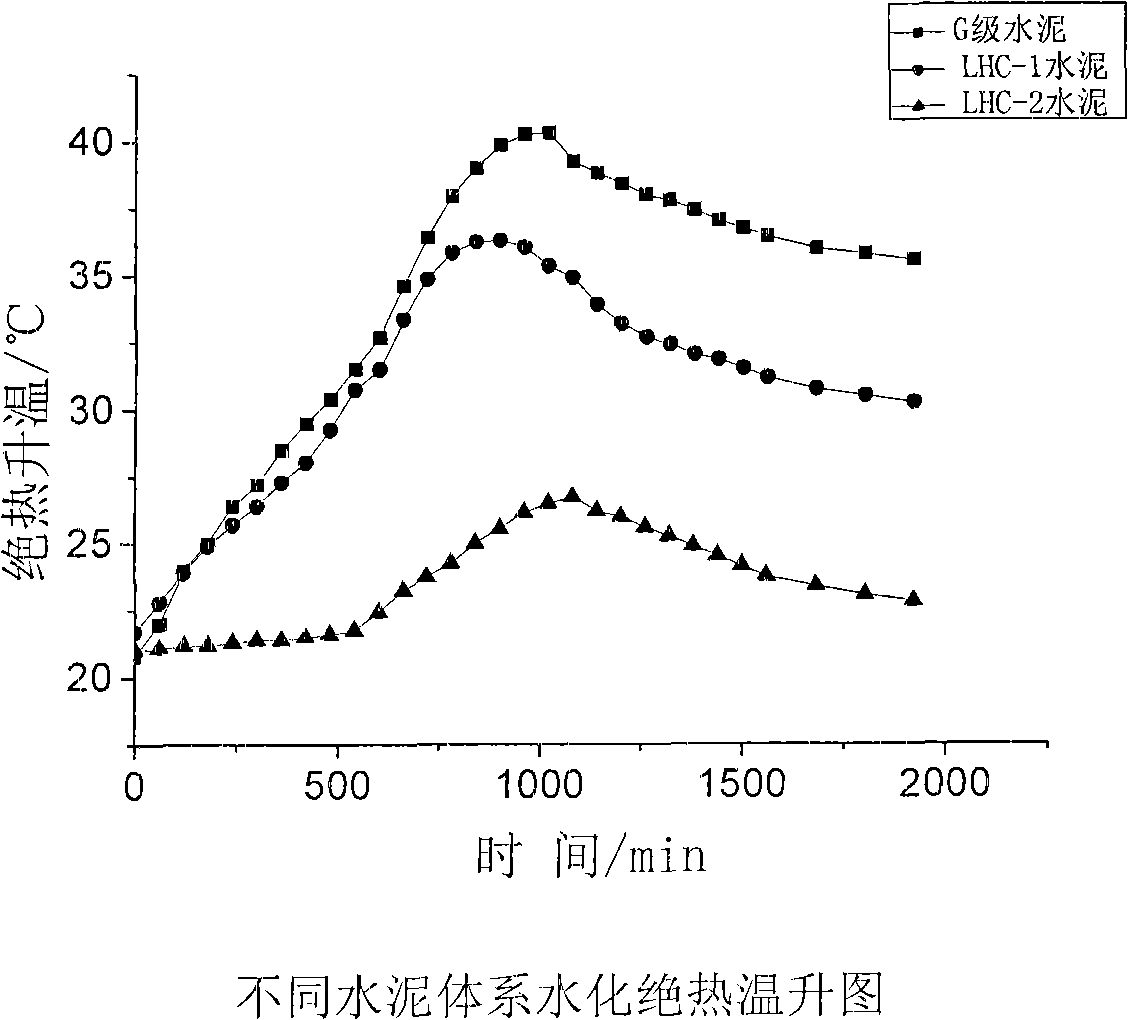Low temperature low hydration heat cementing cement system
A cementing technology with low heat of hydration, applied in low-temperature surface cementing and onshore permafrost fields, to achieve low water loss, prevent dry shrinkage, and prevent thermal decomposition
- Summary
- Abstract
- Description
- Claims
- Application Information
AI Technical Summary
Problems solved by technology
Method used
Image
Examples
Embodiment 1
[0019] Example 1, performance evaluation of the low heat of hydration cement system of the present invention with low heat of hydration
[0020] Cement components: G-grade oil well cement 41.59%, ultra-fine slag 30%, fly ash 18.10%, gypsum 4.06%, and the rest are other minor admixtures. Code-named sample LHC-1.
[0021] Cement components: G-grade oil well cement 32.40%, ultra-fine slag 32.02%, fly ash 28.42%, gypsum 4.01%, and the rest are other minor admixtures. Codenamed sample LHC-2.
[0022] Prepare cement slurry according to the deep water cementing test standard API 10B-3-2004, and measure the density, heat of hydration, and adiabatic temperature rise of the cement slurry, and compare the heat of hydration with the conventional density G-grade oil well cement slurry under the same conditions, and the measurement results See Table 1 and Figure 1.
[0023] The experimental results show that the heat of hydration of the low-temperature and low-heat-of-hydration cement sy...
Embodiment 2
[0026] Example 2, Evaluation of the impact of activators on the compressive strength of the low-temperature and low-hydration heat cementing cement system of the present invention
[0027] Prepare cement slurry according to the deep water cementing test standard API 10B-3-2004, measure the compressive strength of the cement slurry under different temperature curing, and compare the compressive strength with the conventional density G grade oil well cement slurry system under the same conditions, and evaluate The results are shown in Table 2. The experimental results showed that CaO, Na 2 SO 4 , Ca(NO 3 ) 2It can well stimulate the fly ash activity in the low-temperature and low-heat-of-hydration cementing cement system of the present invention, improve the early strength of cement stone, and have good compatibility. At the same time, CaO is a good lattice expansion material. Its slight expansion can not only prevent the shrinkage of cement when it is solidified, but also i...
Embodiment 3
[0032] Example 3, the effect of retarder on the thickening performance of the low-temperature and low-hydration heat cementing cement system of the present invention
PUM
| Property | Measurement | Unit |
|---|---|---|
| specific surface area | aaaaa | aaaaa |
| strength | aaaaa | aaaaa |
| strength | aaaaa | aaaaa |
Abstract
Description
Claims
Application Information
 Login to View More
Login to View More - R&D
- Intellectual Property
- Life Sciences
- Materials
- Tech Scout
- Unparalleled Data Quality
- Higher Quality Content
- 60% Fewer Hallucinations
Browse by: Latest US Patents, China's latest patents, Technical Efficacy Thesaurus, Application Domain, Technology Topic, Popular Technical Reports.
© 2025 PatSnap. All rights reserved.Legal|Privacy policy|Modern Slavery Act Transparency Statement|Sitemap|About US| Contact US: help@patsnap.com



